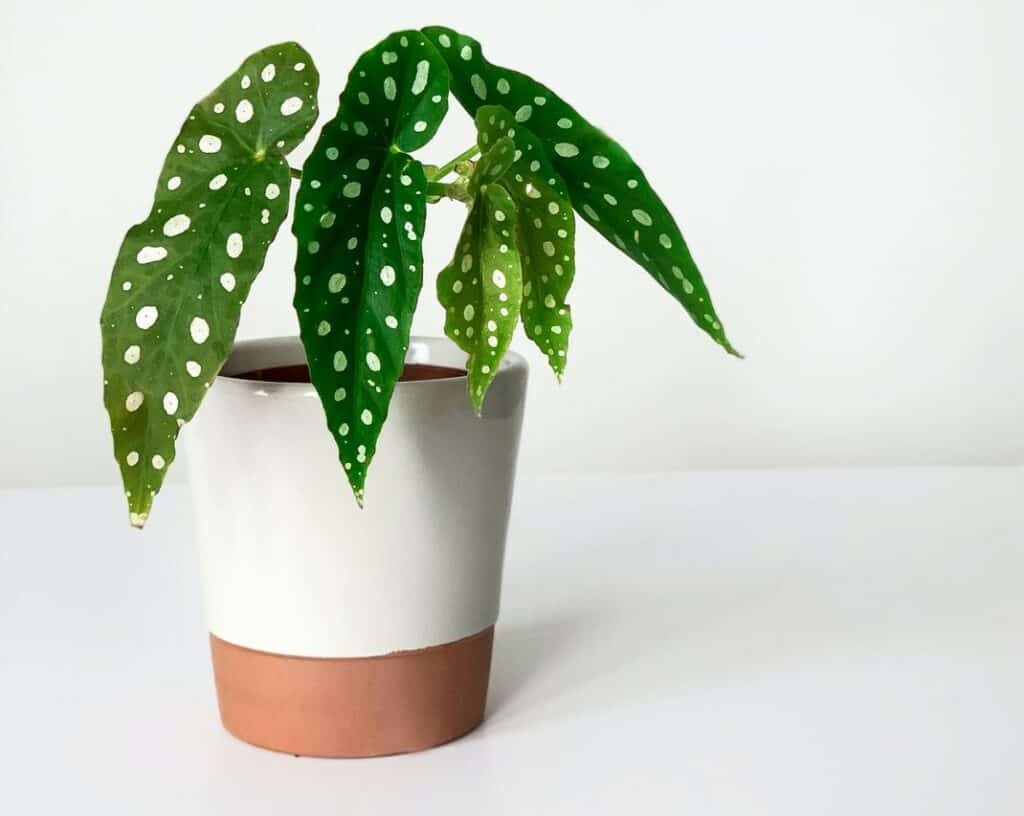- Ficus Pumila: Is This Vining Plant Too Needy For Your Time? - August 29, 2021
- Peperomia Frost: Why Peperomia Caperata Is The Perfect Indoor Plant - August 19, 2021
- Wax Begonia: Can Begonia Semperflorens Survive At Home? - August 18, 2021
Begonia maculata, known more commonly as spotted or polka dot begonia, is an eye-catching addition to any houseplant collection; with angel-like leaves and clusters of delicate white flowers at the right time of year, it’s certainly a plant to admire.
Native to southeast Brazil, this photogenic plant is quickly becoming a popular indoor choice for brightening up any room. The best news is that it’s also relatively easy to care for, and, as we know, a happy houseplant makes a happy home.
In this blog, we share our top tips to help your polka dot begonia thrive. We’ll cover everything from cultivating seeds and growing conditions to companion planting and maintenance so that you can become an expert on these showstopping plants.
How to Identify Begonia Maculata
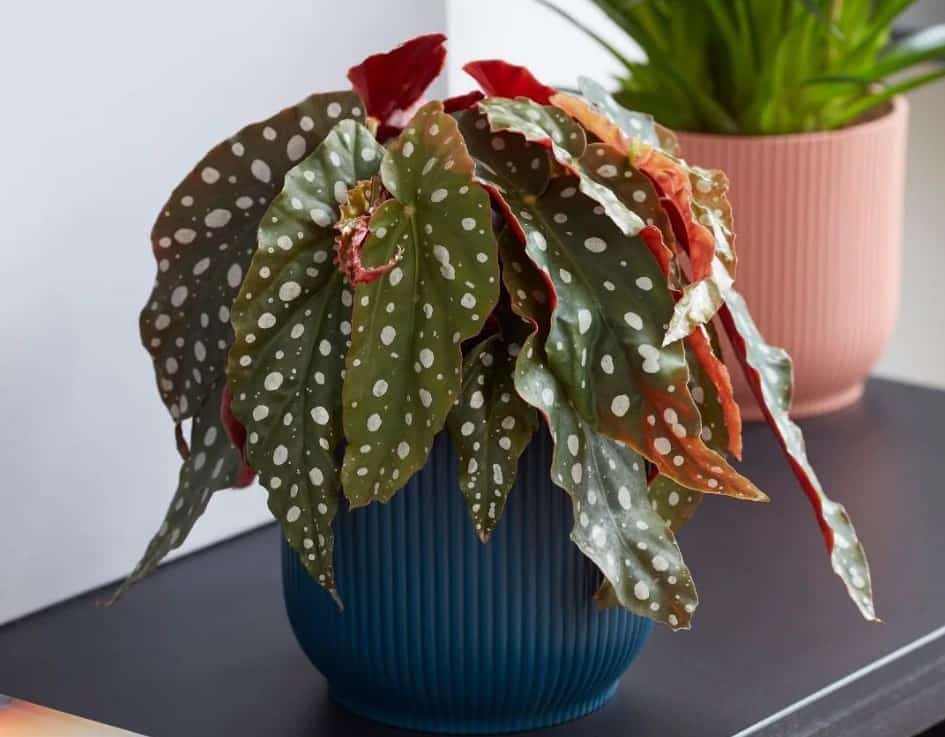
As their name suggests, polka dot begonias are easily identifiable by the unusual spots on their waxy leaves. These spots are silvery-white in color, set against a deep olive green. Their undersides, by contrast, are maroon – another pleasing surprise from this striking plant – and they grow on long bamboo-like stems. Polka dot begonias can reach a meter in height, with white or pale pink flowers blooming in clusters throughout spring and summer.
How to Grow Begonia Maculata From Seed
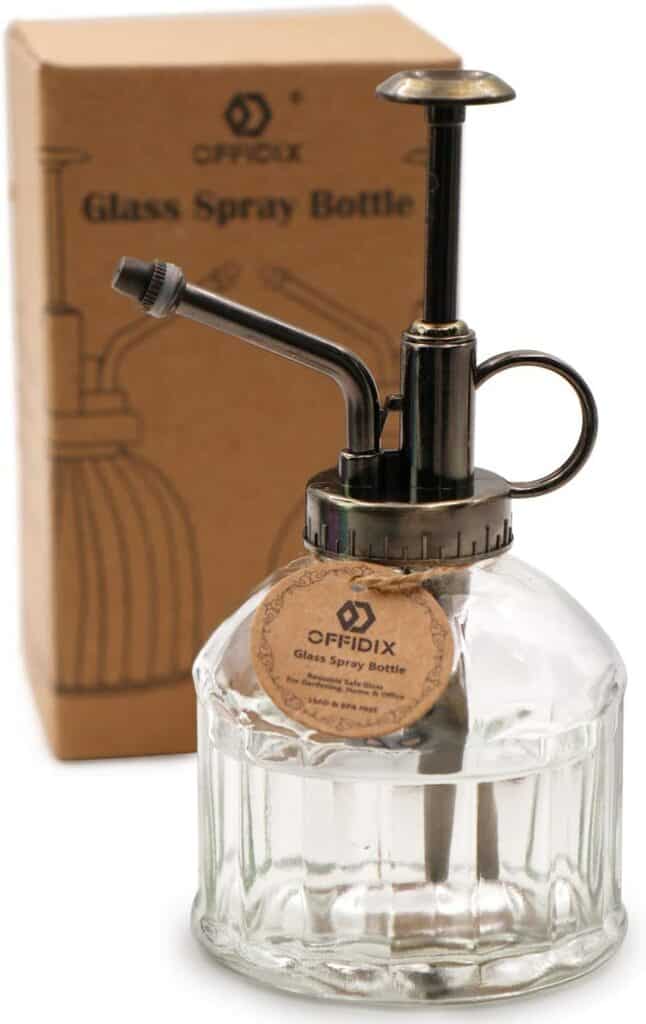
Though caring for begonias is simple once they have grown into mature plants, getting seeds to germinate requires some extra thought and care. However, if you follow each step and provide the perfect conditions, it should be easy to get your seeds to flourish.
- Firstly, it’s crucial you sterilize your planting container since polka dot begonias are prone to developing fungal diseases. You will also need sterile, peat-free potting soil that is specifically designed for planting seeds.
- Begonia seeds need light to germinate; once you have filled your planting tray with soil, all you need to do is press them against the surface. Try to distribute them evenly – this can be difficult since they are so small!
- It’s a good idea to water the seeds with a mister, which you can buy here, to avoid moving them around. There is no strict rule for watering the seeds – you just need to make sure they do not dry out.
- Next, cover with a humidity dome. Finally, place the tray under grow lights that run for at least 14 hours a day. Alternatively, the seeds will thrive in a greenhouse environment.
- The next step is to be patient. Sometimes begonia seeds can take weeks to germinate, but we promise it will be worth the wait. As soon as they begin to germinate, make sure you remove the dome.
- Once your seedlings develop leaves, you can transplant them into small plastic pots that have been sterilized. As the plants continue to grow, they will need to be repotted to accommodate their size.
How to Propagate Begonia Maculata
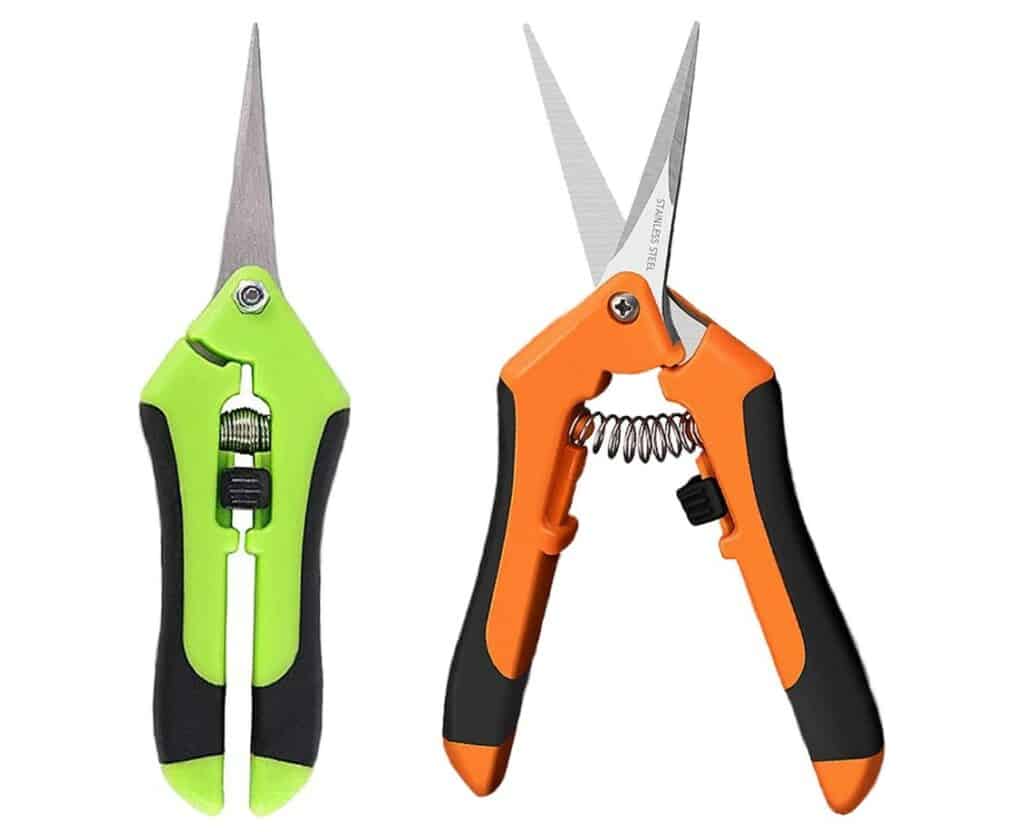
Propagating polka dot begonia is simple with the right know-how. It’s important to consider the plant’s weaknesses, such as its susceptibility to root rot and plan accordingly. Here, we’ll help you do just that. Follow these steps, and you’ll have beautiful begonias in no time!
Top tip: Wait until your plant has enough leaves for you to take multiple cuttings; it’s likely not all of them will be successful when propagated.
- First, you need to take a cutting from the plant. Use sharp scissors to make a clean cut and ensure part of the stem is still intact.
- Place the cutting in water until you see roots start to appear. Once they have reached roughly two inches long, it’s time for potting.
- Plant in the same soil as your original begonia. The new plant will need watering more often to ease the transition between water and soil.
Begonia Maculata Growing Conditions
Polka dot begonias should be planted during late spring for the best results, particularly if you plan to keep yours outside.
How to Plant Begonia Maculata
Make sure you use a pot that will allow the soil to drain properly, as this plays an important role in preventing root rot.
Begonia Maculata Potting & Soil
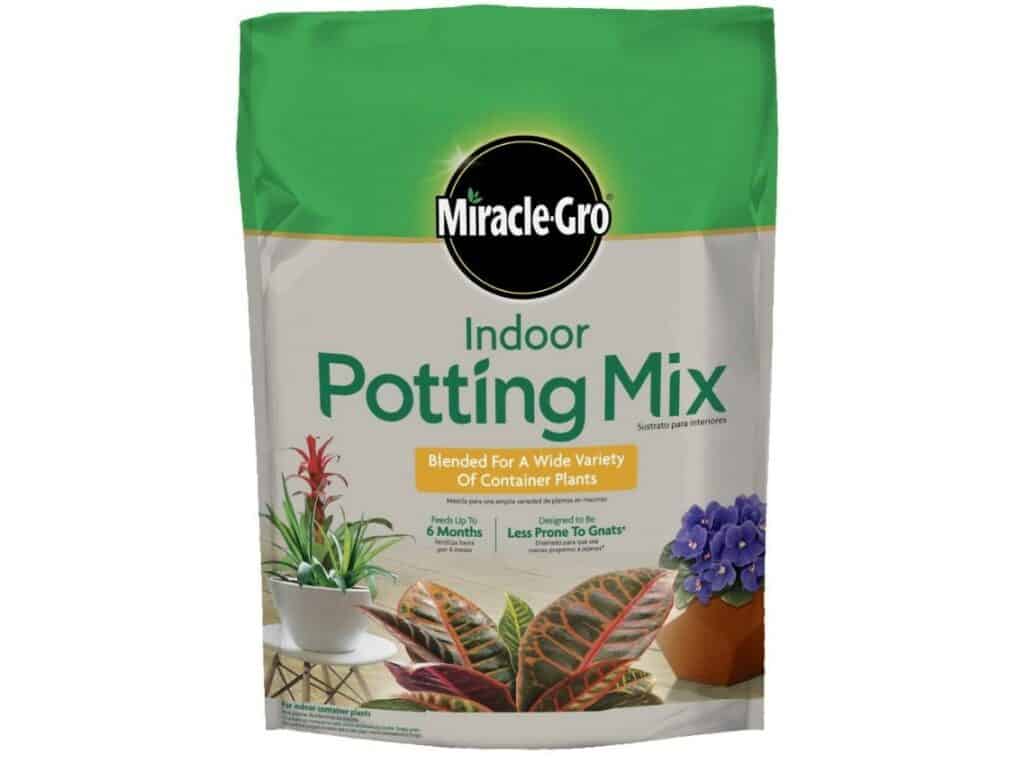
Despite their intense beauty, polka dot begonias are not too difficult to care for. Use light potting soil mixed with woodchips, sand, perlite, or clay to create the ideal conditions for your plant to thrive. We recommend combining this Miracle-Gro potting mix with perlite.
Begonia Maculata Water Requirements
Polka dot begonias love moist soil, so it’s important to water them regularly. If you allow the soil to become dry, leaves will begin to fall off your plant – even green leaves that appear healthy. On the other hand, soil that is too wet will result in yellowing leaves falling from the plant. For this reason, you must strike a careful balance. Most begonias will need watering at least once a week, which will vary from plant to plant. Once you have mastered your polka dot begonia’s ideal moisture level, you can relax and watch it grow!
Begonia Maculata Light Requirements
One of the best things about polka dot begonias is their preference for indirect sunlight, meaning they can be kept in places where other plants would not get enough light to survive. However, it’s crucial they still get some sun; without any, their condition will quickly deteriorate. Avoid bright light in the afternoon as this will cause the leaves to dry out.
Best Begonia Maculata Fertilizer
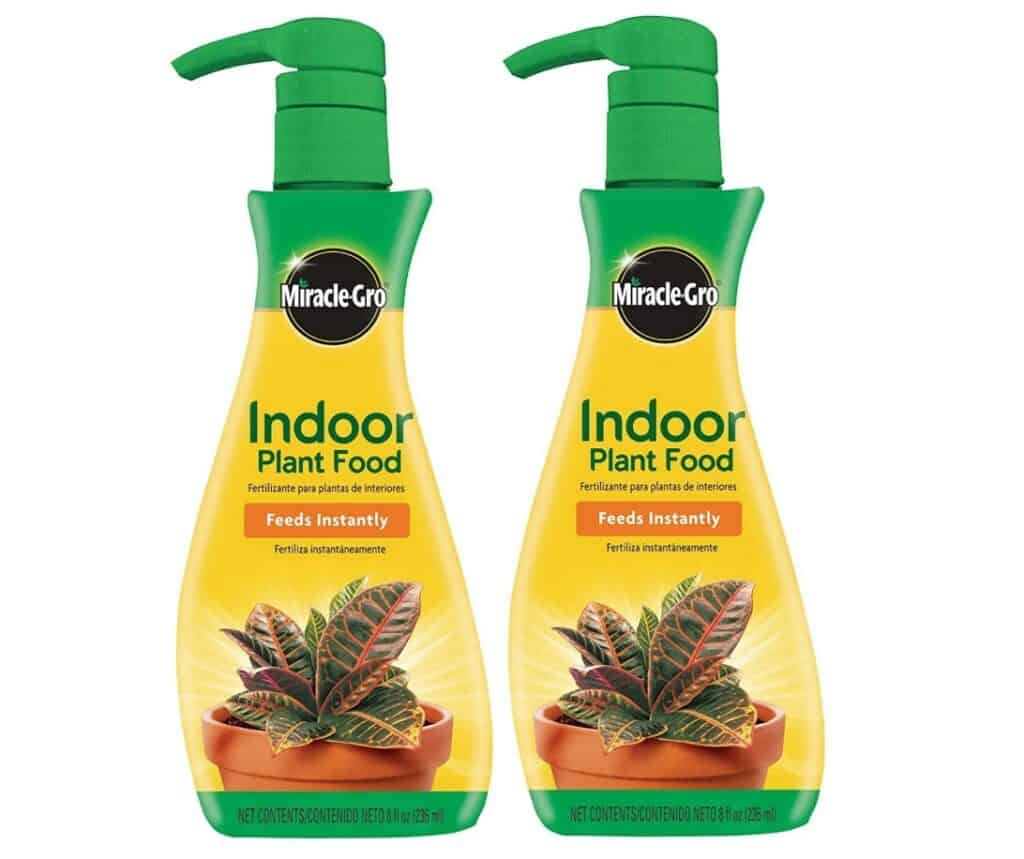
Since polka dot begonias flower during spring and summer, they require fertilizer at this time of year to nurture their brilliant blooms. Add this liquid fertilizer roughly once every four glasses of water to keep your plant in tip-top condition!
There’s no need for fertilizer during the winter months; your begonia will use this dormancy period to recover from growing.
Companion Plantings for Begonia Maculata
Due to their need for the right amount of moisture and indirect sunlight, polka dot begonias that are being kept indoors will thrive on their own. However, if you’re looking for a visually pleasing arrangement, prayer-plants (Maranta leuconeura) are a good choice; not only are they beautiful to look at, they also require similar growing conditions.
Begonia Maculata Diseases and Common Problems
While polka dot begonias are easy to care for and relatively low maintenance, making them ideal for plant owners who lead busy lives, like any plant, they come with their own set of common problems and pests. Fortunately, if you know what to look out for, any issues that arise should be treatable with a little care and patience.
Read on to find out about the pests and diseases you need to be aware of if you’re thinking about bringing one of these stunning plants into your home.
Pests
- Vine Weevil (Oteorhynchus sulcatus). These beetles eat a number of plants and are most active in spring/summer. Young plants that are kept in containers are most at risk.
- Mealybug (Pseudococcidae). While these pests are quite common, they are also easy to get rid of if you catch them soon enough. Typically, they can be found at the roots of plants.
- Whiteflies (Aleyrodidae). Whiteflies colonize the underside of leaves and stem joints.
Diseases
- Powdery mildew. This is one of the most common issues for polka dot begonias, and humid conditions which would otherwise have been healthy can increase the threat. You will first notice powdery spots of white on the leaves before it begins to spread.
- Stem rot. Prevention is crucial when it comes to rot; maintain well-drained soil, and your begonia should not be affected.
- Botrytis. This causes brown, soggy patches on leaves and is often the result of poor air circulation. Make sure you prune any areas that have been affected.
Treatments and Maintenance of Begonia Maculata
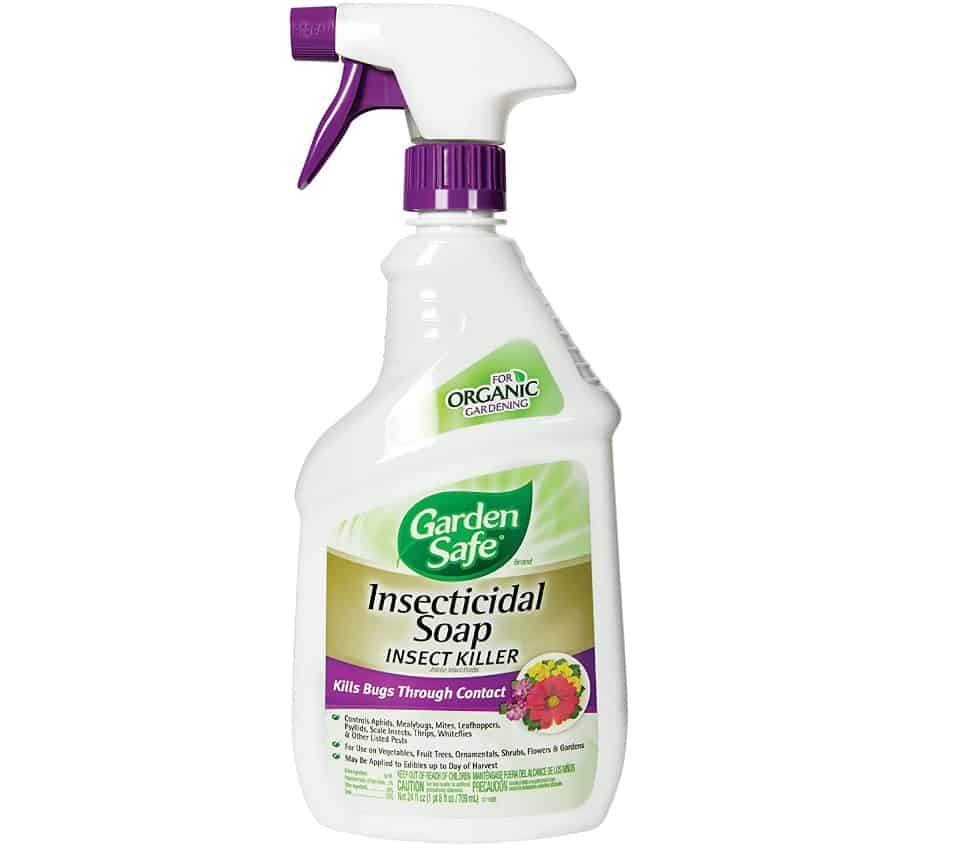
While prevention is always better than cure, sometimes plant problems are unavoidable. There’s no need to panic, however, as a range of methods can be used to combat common ailments.
Insecticidal soap sprays provide one method of alleviating nasty pests. For fungal infections like powdery mildew, you can also purchase fungicides. You should always remove any affected material first and allow the topsoil to dry before rewatering.
By sterilizing your plant pots and soil, as well as maintaining the correct moisture level, your polka dot begonia should be able to avoid many of these common problems.
Where to Buy Begonia Maculata Seeds Online
To purchase Begonia maculata seeds online, visit Select Seeds. Alternatively, you can search on Amazon.
Where to Buy Mature Begonia Maculata Online
You can find mature polka dot begonia plants here.
FAQs
Question: How can I stop my Begonia maculata from falling over?
Answer: While it can be alarming when you see your beloved plant falling over or leaning in one direction, there is an easy and cheap fix to this problem. Simply purchase a thin stake or cane to which you can tie your begonia. This can be done at any time, but ideally when you are repotting. Make sure you angle the stake away from the direction in which the plant is falling and use soft ties to attach it; this will give your begonia the support it needs.
Question: How should I prune my Begonia maculata?
Answer: Once your polka dot begonia has finished blooming, and its flowers begin to turn brown, they should be removed along with any dead leaves to promote new growth. This also prevents the dead matter from rotting, which can cause serious problems for your begonia. When pruning, try to remove buds at the top of the plant’s lateral branches and a couple of healthy shoots. Doing so will encourage the plant to grow more branches in the future.
Question: Why doesn’t my Begonia maculata flower?
Answer: If your polka dot begonia is growing long leaves but failing to flower, there are a number of possible explanations.
• Lack of light. While polka dot begonias do not need direct sunlight, a lack of light can also make it difficult to form flower buds.
• Too much fertilization. This is particularly relevant if you use nitrogen fertilizer, which can result in dense branches and leaves but no flowers. You should be fertilizing your begonia once every few weeks in the summer.
• Overwatering is the final possibility; doing so leads to excessive growth and increases the plant’s risk of root rot.
Question: Why has my Begonia maculata stopped growing?
Answer: If your polka dot begonia has mysteriously stopped growing despite being kept under usual watering and fertilization conditions, this could indicate the plant needs repotting. Normally, your begonia should be repotted in the early spring of each year to maximize growth and general plant health.
Question: What other types of begonia are there?
Answer: Begonia is a genus of perennial flowering plants in the Begoniaceae family, of which there are at least 2,000 different species. They can vary considerably in appearance, with different blooms and foliage. Polka dot begonias are a type of cane begonia.

